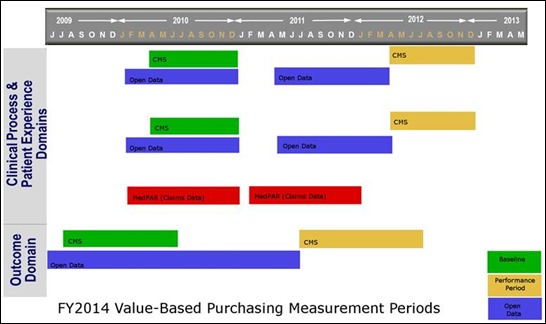RE: Change HC/RansomHub, now that the data is for sale, what is the federal govt. or DOD doing to protect…
Readers Write: The Shady Side of Value-Based Purchasing
The Shady Side of Value-Based Purchasing
By Data Nerd
Beginning October 1, 2013, CMS is implementing what it is calling “Value-Based Purchasing.” As a lifelong policy student, I cannot help but admire the mathematical and administrative intellect behind the program.
Even politically speaking, it has a stroke of genius to it. The funds come from a pre-determined source (starting at 1 percent of reimbursement payments) and the payouts cannot exceed a set amount (said 1 percent of payments). This is achieved by several stages of normalization, where scores are weighted and examined as part of a ratio rather than on their own merit. Hospitals can earn in excess of their 1 percent withheld payments either by improving their own scores over time or scoring better than the other hospitals participating in the program. This differential is then weighted and reweighted to ensure that payouts never exceed the 1 percent amount withheld from all participating hospitals. Awards are all dependent on industry performance as a whole, since the same sum of money will be awarded overall even if every hospital had perfect scores.
CMS is to be commended on the clear and concise way they made the details of the program readily available, providing everything from a slide deck to a recorded provider call to walk through examples. But that is where the understanding (and compliments) end for this data nerd.
By sharing all of the plans for the program, it was easy to get the impression that numbers could easily be crunched from data that is already open. However, open data sources cover quality metrics that were taken over measurement periods that differ greatly from the measurement periods being used by CMS to calculate awards and penalties. Even though we’re talking about the same metrics, we have different reporting periods, so the data is not going to be the same.
One could argue it is another stroke of administrative genius to craft a program then ensure that no one has the data needed to either predict or verify financial outcomes. Based on the latest release of quality data, none of the open datasets are compatible with what CMS will be using to perform VBP calculations (in green and yellow). Some data have yet to be released, while other archived datasets use different timetables, making it impossible to determine hospital eligibility for the program. MedPAR data could theoretically be used to calculate reimbursement withholdings, but without knowing which hospitals are eligible, it makes it impossible to predict which will participate, much less any other aggregate observations (will more hospitals lose than gain, will losses or gains be great or small, etc.).
With all of the talk about transparency, this whole program looks shadier to me with each passing fiscal year.



Mr. Nerd…
Nice piece, good points.
But I don’t understand how our federal government could set up an incentive /penalty program and not have (or make available) the data necessary to have participants make rational and informed decisions. And you say the rules are not clearly defined?? You’ve got to be wrong, tell me it ain’t so!
What’s that you say? It must be right because if you look at at ARRA /MU you’ll see the same thing. Oh boy looks like a storm is coming.